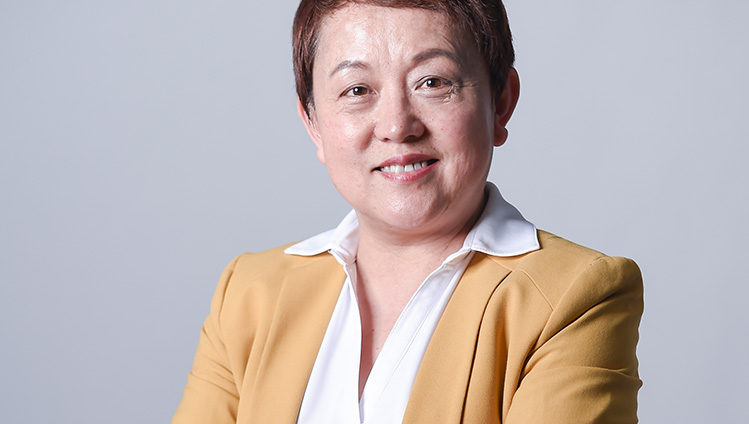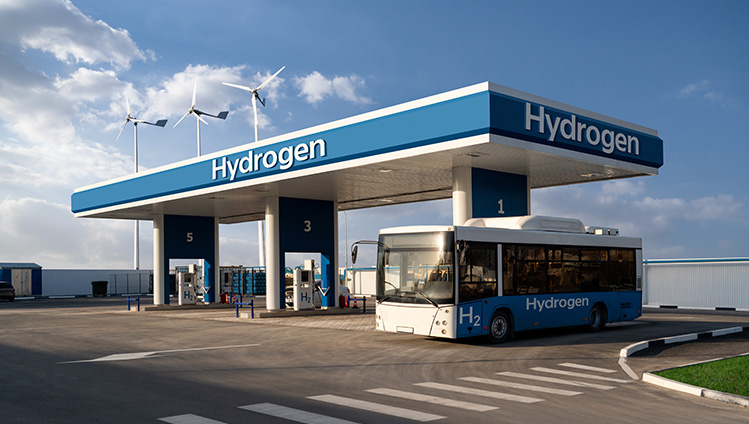Interview with Dr. Jenny Yu, China Head of R&D at Continental’s Business Area ContiTech about the past, present and future of hydrogen and fuel-cell technology. Dr. Yu does not only oversee the research and development activities at Continental in the areas of conveying and industrial fluid solutions for the Chinese market. From the regional headquarters in Shanghai, she also plays a leading role when the technology company proactively contributes to new technologies that will determine the future of mobility – including the hydrogen and fuel cells.
Questions for Our Expert Dr. Jenny Yu

Dr. Yu, why is Continental committed to work on technological solutions for hydrogen and fuel cell applications?
|

|
You can certainly name plenty of reasons. At the core, though, is Continental’s commitment as a company to become carbon-neutral by 2050. That includes our materials, our operations and our processes which have to become much more sustainable. And that approach obviously also pertains to our product portfolio. We want to add more and more products that relate to renewable energy. Hydrogen and fuel cells clearly fit into that picture because they’re clean and truly zero-emission. In my view, hydrogen will be the powerhouse for the 21st century. Therefore, Continental is investing in this future technology as a way of contributing to its 2050 carbon-neutral plans.
|
|
Why is China at the center of Continental’s activities in fuel-cell technology?
|

|
There are a number of driving factors for this. You may know that the Chinese government has made a couple of decisions relating to sustainability in the past years. They’ve joined the Paris Agreement and have committed to China becoming carbon-neutral by 2060. And one part of that was a national hydrogen and fuel-cell roadmap. In some sense, the Chinese want to be leading in both electric vehicles and hydrogen technology, just like Europe and the US are leading in combustion engine technology. That means, the Chinese government strongly supports companies who want to invest in hydrogen and fuel-cell R&D as well as manufacturing within the country. That goes for both the central and the regional governments, who grant you subsidies for these kinds of activities.
You know, you can already see that effort in real life when you look at the number of fuel cell-powered buses or commercial vehicles currently on the road or the amount of hydrogen dispensing stations. That, in turn, means that there is already a good market here in China for our products and a number of interesting customers we can develop our components for. So, Continental wants to take advantage of these factors and establish the first Hydrogen and Fuel Cell Competence Center within the company here in Changshu. It’s the perfect storm, really.
|
|
In your view, is the fuel-cell technology the answer for the future of mobility and what may be the main reason currently preventing its breakthrough?
|

|
The main obstacle at the moment is a cost issue. Let’s go back quickly and look at how hydrogen can be produced at the moment. To break down water into its element’s hydrogen and oxygen, you need energy. And to produce that, you can use fossil fuels like oil, natural gas or coal. That hydrogen is called grey, because it’s not really produced sustainably. Additionally, hydrogen can also be the result of a completely unrelated production process like in a refinery plant. That side product is called blue hydrogen. It’s still not green, but at least you don’t burn any extra fossil fuels. And the third way of generating hydrogen is if you use sustainable energy like solar or wind power. That’s the truly green hydrogen we would like to see. So, production is a big cost factor, at least for now. The other factor is transportation costs, because that hydrogen has to be brought from where it is produced to where it is used. That infrastructure has to be built and requires a lot of investment. We believe that hydrogen will eventually be the ultimate one of main forms of energy. Refueling hydrogen just takes a couple of minutes and produces a higher mileage.
|
Tell us about your current hydrogen and fuel-cell activities in China. What are you working on now and what are your plans?
|

|
We are fortunate that we can represent Continental to provide relevant fuel cell components and we are not limited to one or two business units or product categories. So, in our brand-new Competence Center as well as our production site in Changshu, we can showcase our technology and material expertise as well as manufacturing know-how. We were already able to form a strategic agreement with one of the big players in the Chinese market: ReFire. ReFire is a fuel cell stack manufacturer and fuel-cell system integrator with a strong presence in commercial vehicles in China. Within that agreement, we are working on components for stack mounts, stack end plates and hydrogen, air, water and coolant hose systems. I’m glad to say that they were impressed with the talent pool assembled there, so that they’ve already lined up new projects in the next few years.
In addition, we have formed a strategic agreement for our industrial business. You know, hydrogen has to be transported and dispensed somehow and for that you need suitable hoses and fitting solutions. One of the leading companies in that area in China is Censtar whom we’ve been working with for ten years. They are specialists in traditional fuel dispenser solutions but have been focusing on the hydrogen handling business meanwhile as well. They appreciate that Continental is a globally acting German company known for being very quality- and technology-driven with a large footprint of more than 5,000 employees in China. They trust us and our good reputation and believe in our strength as a big, international company.
|

What are your connections to your colleagues in Germany?
|

|
Obviously, we cannot work alone on advancing fuel-cell technology. A lot of our German R&D colleagues work together with us when it comes to technology and material expertise, whereas we share valuable information about customers’ needs and demands with each other. So, we are an integral part of the R&D structure and I think collaborating, working closely together, is really the best way to advance our technologies. So, for us, it’s really advantageous.
|
How was it during Covid-19, working remotely with all your colleagues around the world?
|

|
For the most part, I think it has worked really well. With various communication tools, it’s easy to have a conversation and see how our colleagues respond and react to what we are thinking and saying. Obviously, it would have been nice to have the occasional face-to-face meeting, but overall, it has been very effective. Now, when working with our customers within China, we have not been that much affected. Both in 2020 and 2021, we were able to travel, visit our customers and attend meetings in person. But I hope, when the Covid-19 pandemic is under control, our German and further international colleagues can join us in those customer visits again.
|
What are the next big milestones for fuel-cell technology development? When do you expect the first fuel cell-powered vehicle with Continental components to start mass production?
|

|
Well, we’ve been approved to supply ReFire with our prototypes and components for their vehicles in small quantities. So, I’d expect that the first vehicles with these parts will hit the roads in 2022. In 2025 and beyond, the amount will increase with the ramp-up of the FCV (fuel-cell vehicle) market. That’s on the vehicle side of the market. On the hydrogen dispensing side, we’ve also been working on marketable solutions. Overall, I would expect that we should have a reasonable, sound footprint in the hydrogen world by 2023.
|
What makes working on new technologies like fuel cells exciting for you personally?
|

|
As an R&D person, it’s always interesting to bring together a team and collaborate globally. And obviously, new ideas are exciting, like venturing into a brand new area with our products that no one has explored before — this is very fulfilling for myself but also for my team. Being the first ones.
|
And what’s the most challenging part of venturing into unknown technological territories?
|

|
The biggest challenge is establishing a close relationship with your customers. They can tell you what their exact requirements are so that you develop a product that will fulfill their expectations when it comes to functionality, quality and safety in addition to meeting the industrial standards. So, meeting that standard requires a very scientific approach using simulation and thoroughly testing of materials and products for which we are establishing appropriate testing capabilities.
|